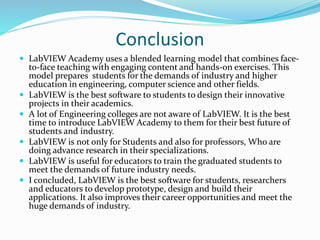

LabVIEW Student Edition is very art-intensive with over 400 figures in all.LabVIEW™ offers a powerful, efficient, and easy-to-use development environment, allowing educators to teach their students a wide range of topics with just one open, industry-standard tool.Career Readiness & Employability Skills.Pearson author roundtable on digital learning.MyLab IT: preparing students for certification.Engaging students with interactive figures.Co-requisite/Accelerated Learning Model.Choosing the Right Solutions for Your Redesign.

Teacher Education & Helping Professions.Engineering, Computer Science & Programming.Using a Team-Based Approach to Learning.Downloading and using instructor resources.Sign in to download instructor resources.Engineering Technology & Industrial Management.Construction Management & Civil Technology.Educational Administration & Leadership.Culinary, Hospitality, Travel & Tourism.Social Work / Family Therapy / Human Services.Mass Communication / Public Relations / Film.This appendix provides an overview of the LabVIEW Developer Certification process as well as a sample CLAD Examination with detailed solutions.
#HOW TO DOWNLOAD LABVIEW STUDENT EDITION HOW TO#
This appendix outlines in detail how to control external hardware instruments from within LabVIEW using serial communication and instrument drivers. This section details the different mathematical analysis available to students within LabVIEW including statistics and curve fitting, differential equations, integration and differentiation, finding the zero of a function, signal generation, and signal processing. The guide includes syntax, defining functions and create scripts, saving and loading data files, MathScript nodes, and useful applications of the module. Students learn about using the NI LabVIEW MathScript RT Module to add textual math to the LabVIEW development environment. In this section, students learn how to use strings and how to write data to files. In this chapter, students learn the fundamentals of data acquisition including the different types of signals that can be acquired, signal conditioning, signal grounding, analog-to-digital converters, configuring DAQ devices to read into LabVIEW, the DAQ Assistant, as well as analog and digital I/O. Students learn how to display and customize the data that they acquire with hardware using charts and graphs. Students are introduced to the different LabVIEW functions available to them dealing with each type as well as how to create them. In this section, students learn about two common LabVIEW data types: arrays and clusters.

Students are also introduced to common programming techniques that involve the structures discussed in this chapter. In this section, students learn the basic structures that are available to program with in LabVIEW, including the for loop, while loop, case structures, formula nodes, and flat sequence structures. Students learn the benefits and fundamentals of creating and customizing a subVI within a broader virtual instrument. This chapter of the textbook guides students in learning about different ways to edit, customize, and fix errors with virtual instruments. Students use this information to build a basic thermistor circuit.Įditing and Debugging Virtual Instruments They are introduced to the front panel, controls and indicators, block diagrams, and data flow programming. Students learn how build applications with virtual instruments, which are fundamental to the LabVIEW programming platform. After learning the basic structure of the program, students are guided through building an introductory LED circuit. Students are guided through the basics of the LabVIEW interface, including menus, palettes, and help options.
#HOW TO DOWNLOAD LABVIEW STUDENT EDITION SOFTWARE#


 0 kommentar(er)
0 kommentar(er)
